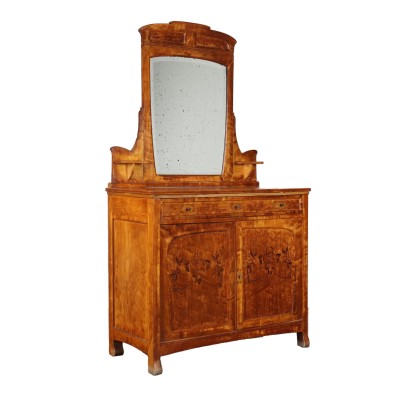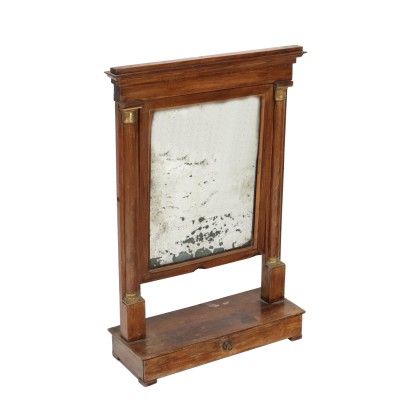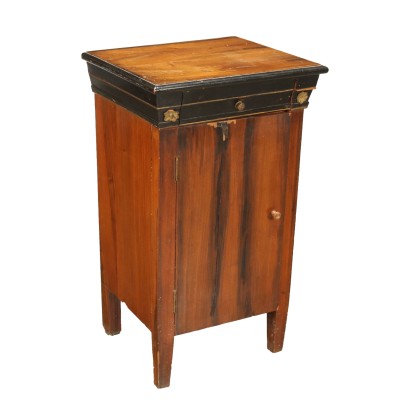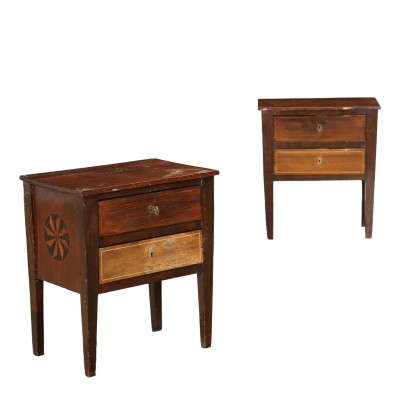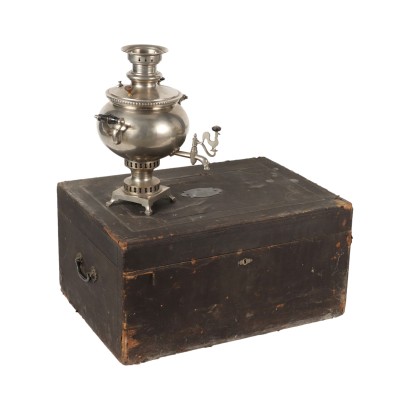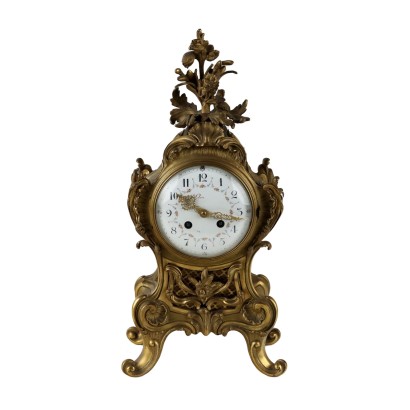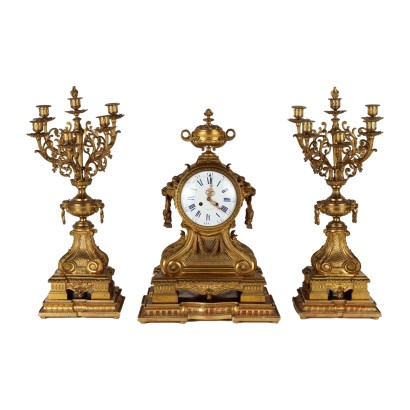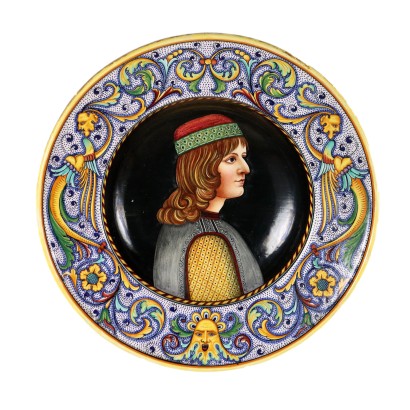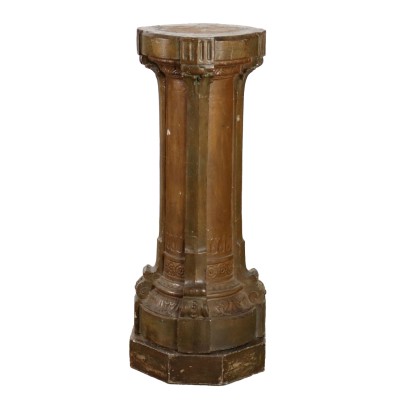Cupboard Art Nouveau Mahogany Italy XIX-XX Century - Italy End of the XIX Century - Early XX Century
Features
Italy End of the XIX Century - Early XX Century
Style: Art Nouveau (1890-1920)
Age: 19th Century / 1801 - 1900 , 20th Century / 1901 - 2000
Origin: Italy
Main essence: Various Wood Essences , Mahogany
Material: Inlaid Wood , Mirror
Description
Cupboard with Art Nouveau with upraised in mahogany and various essences, Italy, late 19th - early 20th century. Shaped upraised with bevelled mirror glass and a pair of side shelves; body equipped with drawer in the band and a pair of doors inlaid with a geometric-floral motif, internal chest of drawers, paneled sides, wavy feet. Floor replaced.
Product Condition:
Product, that due to age and usage, requires restoration and polishing works.
Dimensions (cm):
Height: 208
Width: 118
Depth: 55
Additional Information
Style: Art Nouveau (1890-1920)
Historical stylistic period formed from the end of the 19th century (c. 1890) after the Umbertino style and continued until the First World War.The current was characterized by the floral influence and the soft and curved lines, a typical example are the "whiplashes".
The first signs of this new era came from architects such as Hector Guimard (1867-1942) who built numerous buildings and hotels, but also from people such as Arthur Mackmurdo furniture designer and Arthur Liberty late 19th century London industrial and merchant who began to produce upholstery fabrics with floral motifs with soft and sinuous shapes.
The 1900 Paris Universal Exposition was an important point for the development and affirmation of Liberty in the following decade.
Liberty was called in different ways according to the nation, universally known as Art-Nouveau and it is thought that Arthur Liberty derives the name given in Italy to this beautiful stylistic current.
The name Art-Nouveau, on the other hand, is thought to derive from a shop located in Paris called Maison de l'Art Nouveau which began to show off furniture items with a new and innovative design in its windows.
With the end of the First World War, the naturalistic period of Liberty ended and the Art-Decò style emerged with more rigid and geometric lines.
Find out more about the Liberty style with our insights:
Art Nouveau: birth and development of a style
Milan Liberty between flowers and colors
The Liberty of Carlo Zen
Decorative forms and elegance in a Liberty lounge
FineArt: Eoloe Cupido, Liberty sculpture by Luca Madrassi
FineArt: Nymph and Faun, Art Nouveau sculpture by Giuseppe Siccardi



